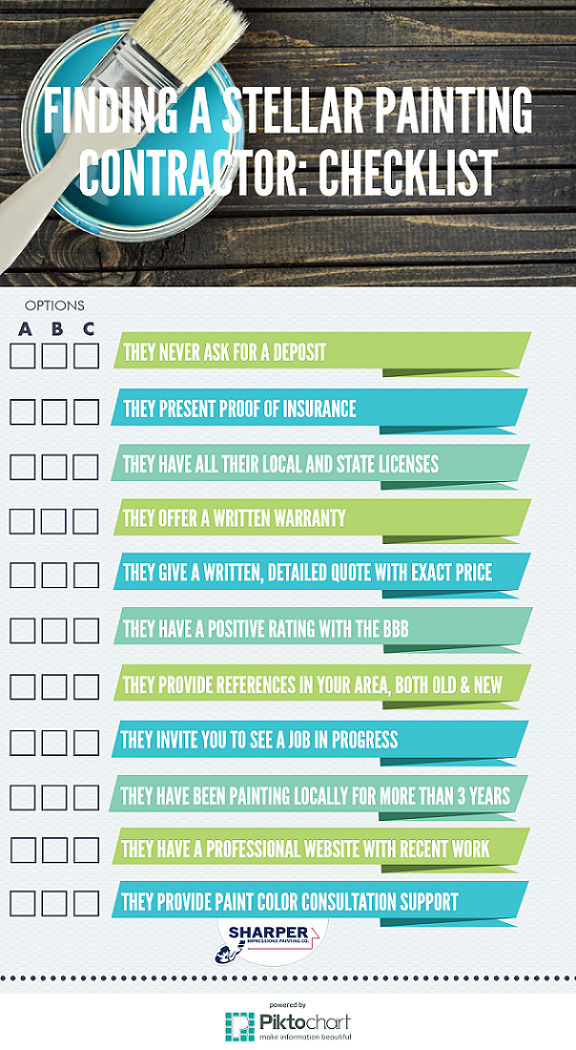The Partnership In Between Paint Color Styles And Mood: Discovering The Psychological Impacts Of Shade Options
The Partnership In Between Paint Color Styles And Mood: Discovering The Psychological Impacts Of Shade Options
Blog Article
Content Produce By-Edvardsen Mayo
When it pertains to selecting paint colors for a space, the choices made prolong beyond mere aesthetic appeals. The psychology of color looks into just how different colors can influence our emotions and psychological wellness, shaping the atmosphere of an area in extensive ways. Understanding the influence of color on mood can lead to intentional and strategic design decisions that cater to improving various elements of our daily lives. By discovering the complex connection in between shade and psychology, one can reveal the subtle yet powerful methods which paint selections impact our psychological experiences within a provided setting.
The Impact of Color on Feelings
Frequently, the shades we surround ourselves with can dramatically influence our emotion and total wellness. The impact of color on emotions is a well-researched field within psychology and interior decoration.
Cozy shades like red, orange, and yellow are understood to evoke sensations of energy, warmth, and convenience. These tones can stimulate discussion and create a comfortable setting in an area.
In contrast, cool shades such as blue, eco-friendly, and purple often tend to have a soothing effect, advertising relaxation and peace. These colors are often liked in rooms and offices to create a sense of tranquility.
Additionally, the intensity and saturation of colors play a critical function in establishing their psychological effect. Bright, vibrant colors can evoke feelings of enjoyment and interest, while muted tones are a lot more calming and mild.
bathroom paint jobs is very important to think about the wanted emotional feedback when choosing paint shades for different spaces in your home or office. By understanding the psychology of color, you can create settings that support your emotional well-being and enhance your total state of mind.
Picking the Right Paint Color Styles
Recognizing the psychology of shade and its impact on emotions can lead people in selecting the appropriate paint shades for their living spaces. When selecting https://www.architecturaldigest.com/story/choose-paint-colors-entire-house , it's vital to consider the state of mind you want to develop in each room.
For instance, soothing shades like blue and environment-friendly are optimal for bed rooms and leisure areas, as they promote a feeling of serenity. On the other hand, vibrant shades like yellow or red can energize and stimulate discussion in social areas such as living areas or dining areas.
In addition to the psychological impact, the dimension and lighting of an area need to additionally affect shade selections. Lighter colors can make a small area feel even more large, while darker tones can add heat and coziness to larger areas. Natural light enhances the way colors show up, so it's critical to evaluate paint examples in various lighting problems before making a final decision.
Eventually, selecting the ideal paint shades entails a thoughtful factor to consider of both emotional actions and functional aspects to produce a harmonious and comfortable living atmosphere.
Producing the Preferred Atmosphere
Attaining the wanted environment in a room includes a calculated mix of color options and illumination considerations. Color plays a vital function in establishing the mood of a room. Warm tones like reds, oranges, and yellows can produce a cozy and inviting environment, perfect for rooms where convenience is key, such as living spaces or bed rooms.
On the other hand, amazing shades like blues and environment-friendlies evoke a sense of tranquility and relaxation, making them suitable for areas where harmony is desired, like restrooms or meditation areas.
In addition to color, illumination is an additional important factor in forming the setting of a room. Soft, warm lights can enhance the warmth of an area, while brilliant, trendy lighting can invigorate and uplift the state of mind. Dimmer buttons or flexible lights components supply flexibility, enabling you to adjust the lights to match different tasks or state of minds throughout the day.
Final thought
In conclusion, the psychology of shade demonstrates the significant influence paint options can carry our mood and feelings within an area.
By recognizing how various shades evoke particular sensations and picking paint shades accordingly, we can develop environments that promote power, comfort, relaxation, or excitement.
Thoroughly choosing the appropriate shades can help us to influence our mood and general health in an offered area.
